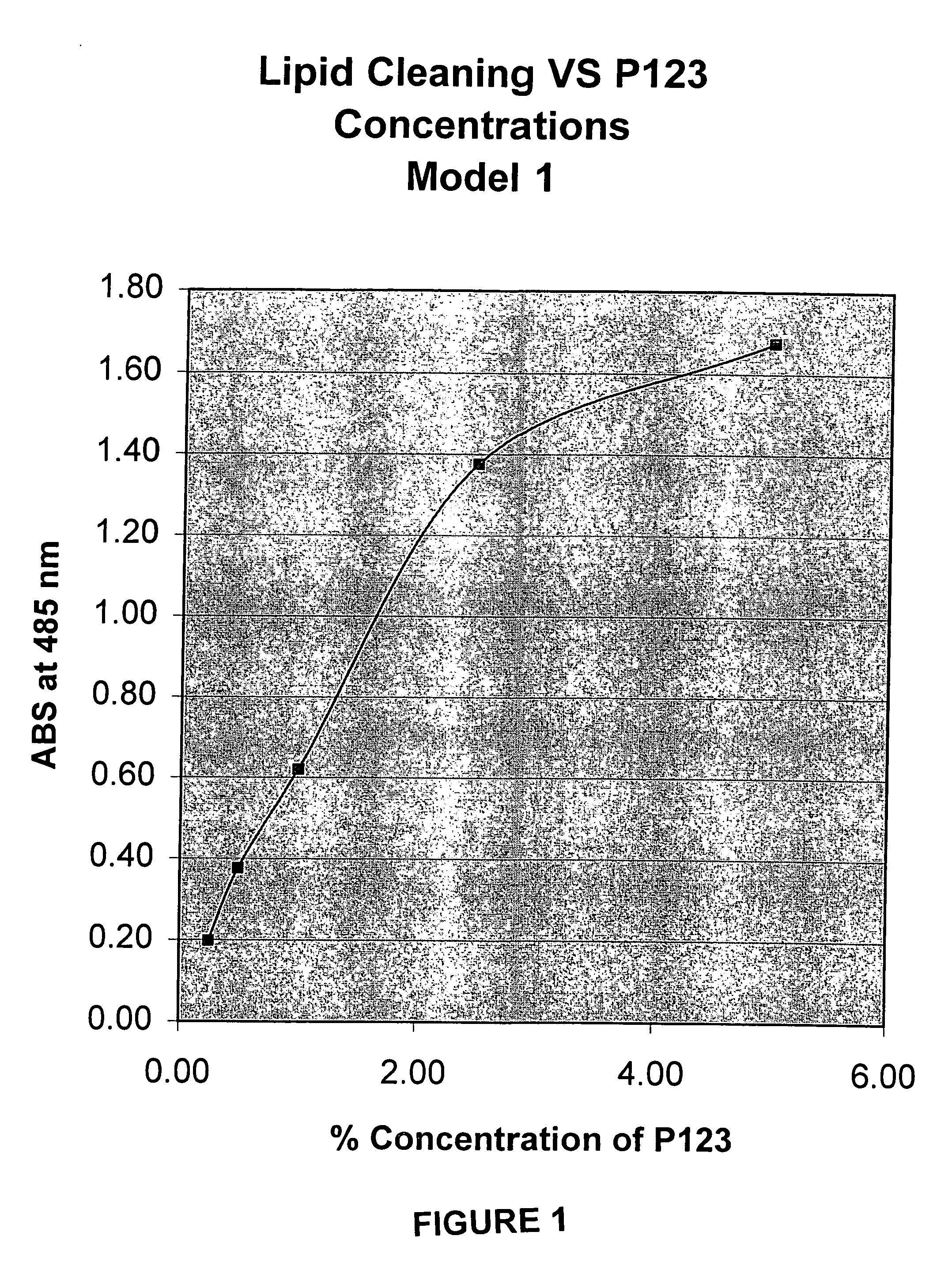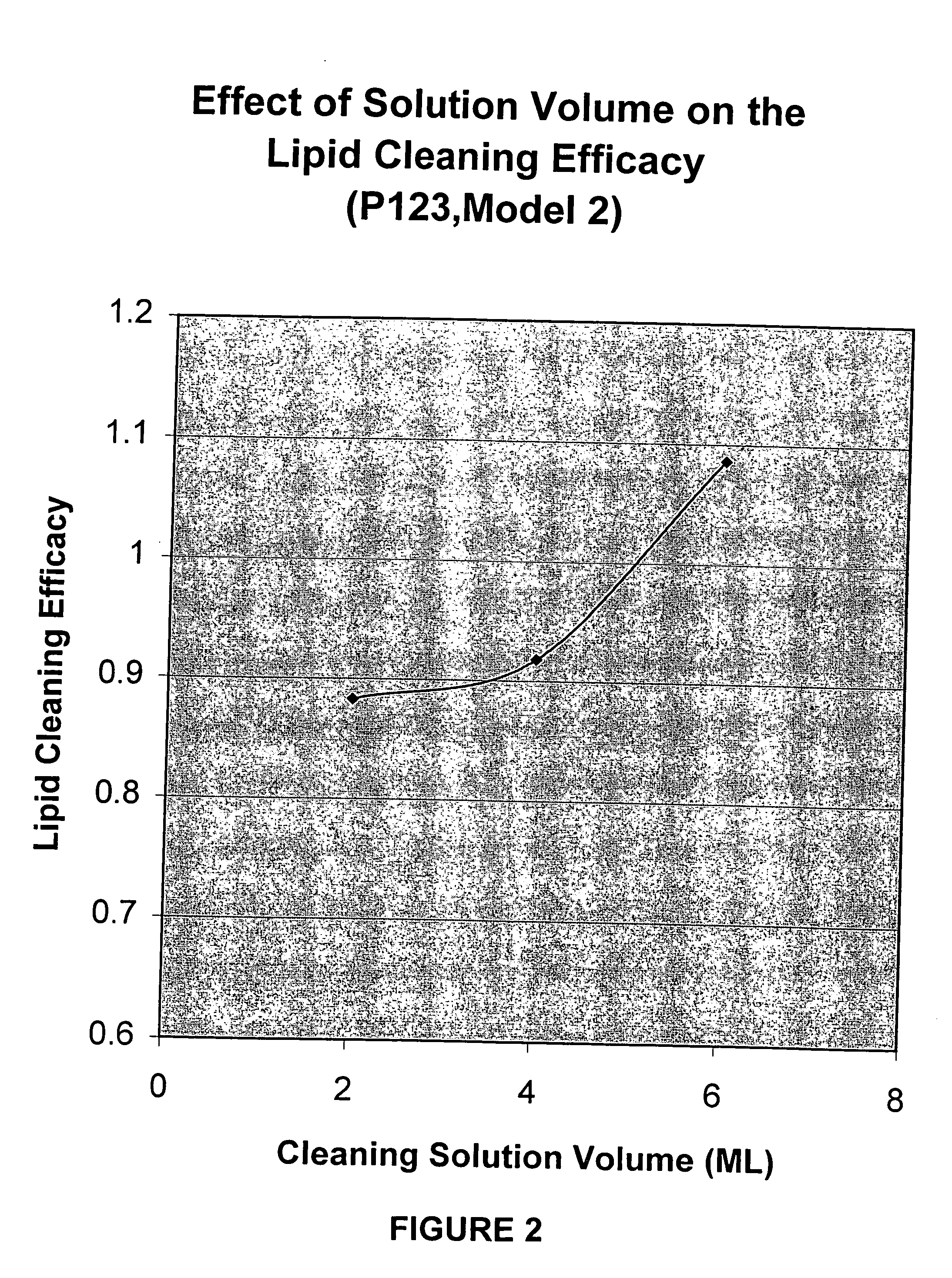Nonionic surfactant containing compositions for cleaning contact lenses
- Summary
- Abstract
- Description
- Claims
- Application Information
AI Technical Summary
Benefits of technology
Problems solved by technology
Method used
Image
Examples
example 1
Preparation of Test Solutions
[0034] Sample solutions for testing were prepared in accordance with the formulations set forth below in Table 1.
TABLE 1TEST SOLUTIONSTest SolutionIngredients % W / W12345Pluronic P1230.2500.5001.0002.5005.000Tetronic 11071.001.001.001.001.00Sodium Borate0.090.090.090.090.09Boric Acid0.640.640.640.640.64EDTA0.110.110.110.110.11PHMB (ppm)1.01.01.01.01.0Dequest 20160.030.030.030.030.03Sodium Chloride0.490.490.490.490.49Purified WaterQ.S. to 100 gm
example 2
Preparation of Artificial Tears for Lipid Cleaning (Model 1 Hands-Off Regimen)
[0035] Artificial tears for use in testing were prepared in accordance with the formulation set forth below in Table 2. The pH of the artificial tears was adjusted to 7.2 using 1 N HCl. Osmolarity=320 mOsm / kg.
TABLE 2Artificial Tears FormulationIngredients% W / WSalts and BufferNaCl0.7KCl0.2NaHCO30.12CaCO30.01NaH2PO4 H2O0.013-(N-morpholino)propanesulfonic acid0.4LipidsPalmitic acid methyl ester0.25Cholesterol0.25Squalene0.25ProteinsMucin0.01Lactoferrin0.01Human albumin serum0.01Lysozyme0.25
example 3
Preparation of Artificial Tears for Lipid Cleaning (Model 2 Hands-Off Regimen)
[0036] Super sterol ester (9.9 gm) was heated slowly until it melted. After melting, 0.1 gm of Sudan I was added to form a 99:1 mixture. The same was then mixed until the solution was homogenous. Using a glass pipette, five drops of mixture were transferred into each 12 cm×12 mm glass screw top test tube. The test tubes were visually checked to ensure that the volume at the bottom of each test tube were of about equal size and diameter. Each batch should accommodate 40 to 50 tubes.
[0037] After preparing the tubes, 5 mL of the test solution was placed into each prepared tube. The tubes were then placed in a rotary shaker for 24 hours on 150 revolutions per minute (rpm) and 25° C. After cleaning, the absorbance (ABS) was measured at 485.5 nm.
PUM
 Login to View More
Login to View More Abstract
Description
Claims
Application Information
 Login to View More
Login to View More - R&D
- Intellectual Property
- Life Sciences
- Materials
- Tech Scout
- Unparalleled Data Quality
- Higher Quality Content
- 60% Fewer Hallucinations
Browse by: Latest US Patents, China's latest patents, Technical Efficacy Thesaurus, Application Domain, Technology Topic, Popular Technical Reports.
© 2025 PatSnap. All rights reserved.Legal|Privacy policy|Modern Slavery Act Transparency Statement|Sitemap|About US| Contact US: help@patsnap.com


